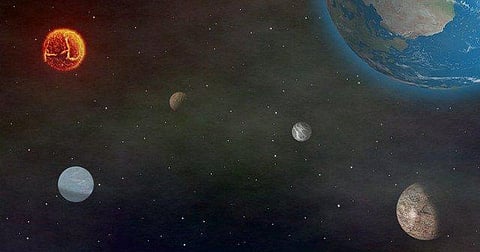Astronomers from the University of California, Berkeley, and the University of Hawaii, Manoa say that based on new analysis of Kepler spacecraft data, one in five stars similar to our own sun is orbited by planets about the size of Earth, with a surface temperature that would be favorable to support life. "What this means is, when you look up at the thousands of stars in the night sky, the nearest sun-like star with an Earth-size planet in its habitable zone is probably only 12 light-years away and can be seen with the naked eye," said UC Berkeley graduate student Erik Petigura, who led the analysis of the Kepler data. "That is amazing,"



